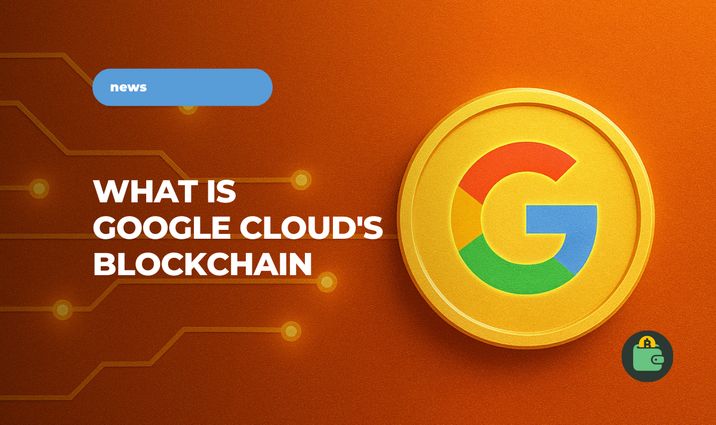Universal Ledger by Google Cloud: A New Bet on Blockchain for the Financial World

Google Cloud has officially announced its own blockchain called Universal Ledger (GCUL). Unlike most existing projects that focus on crypto users and decentralized apps, this one is built for banks and financial institutions. The goal is to create a “neutral” infrastructure where payments, digital money, and tokenized assets can be managed under full regulatory compliance.
Key Takeaways
-
Google Cloud Universal Ledger (GCUL) is a new blockchain from Google Cloud for banks and the financial sector, focused on asset tokenization and instant 24/7 settlements.
-
The network works as a private, permissioned blockchain on Google Cloud infrastructure with multi-currency support and smart contracts in Python.
-
GCUL is closer to corporate solutions like Hyperledger Fabric than to public blockchains such as Ethereum or Solana, but it benefits from Google’s global scale.
-
The project’s success depends on trust in its neutrality and regulator support; without them, it risks staying only at the pilot stage.
Why Google Created Universal Ledger
The main idea behind GCUL is to replace fragmented settlement systems with a single distributed ledger. Today, bank payments often go through several intermediaries, take hours or even days, and require manual reconciliation. With GCUL, transactions are automated, executed instantly, and available 24/7. The system ensures that money is debited from the payer and credited to the receiver at the same time, removing settlement risks and cutting costs.
Another key point is transparency. Fees are fixed and billed monthly instead of being tied to each transaction like on public blockchains. The platform is also built with compliance in mind: all participants are verified and transactions follow KYC and AML rules. This makes GCUL less of a tool for crypto enthusiasts and more of a solution for conservative financial institutions.
How Universal Ledger Works
GCUL runs on Google’s cloud infrastructure as a private, permissioned network. Only verified organizations can join, and operations go through a single API that supports multiple currencies and digital assets. This lets banks manage accounts in different currencies within one system, without the need for complex integrations.
Smart contracts are written in Python, which makes it easier for financial engineers to implement business rules. Transactions are atomic: they either complete fully for both sides or not at all. This is especially important for securities or margin settlements.
Google also highlights the privacy of the network. All operations are encrypted and auditable by regulators while protecting client confidentiality. The consensus mechanism hasn’t been disclosed, but experts expect something similar to BFT, which fits private networks. Scalability comes from Google Cloud itself, making it possible to process millions of transactions and support a global user base.
Comparison with Other Blockchains
Universal Ledger is closer to corporate solutions like Hyperledger Fabric than to public blockchains. Ethereum and Solana were designed as open ecosystems for DeFi, NFTs, and apps. They are valuable because they are decentralized and accessible to anyone, but this makes them less attractive for banks that need stability and control.
Hyperledger Fabric, like GCUL, is aimed at consortiums and enterprises. However, GCUL benefits from Google’s scale and global infrastructure. While Ethereum remains a universal platform for developers and Solana focuses on high-performance apps, GCUL is narrowly targeted at the financial sector with reliability and compliance as its priorities.
Expert Opinions
Analysts see several strengths in the project. Google’s global scale gives it the ability to bring together billions of users and provide financial institutions with top-level infrastructure. GCUL is described as a “neutral platform” where banks, exchanges, and stablecoin issuers can work together without depending on competitors. The pilot project with CME Group, which already uses GCUL for settlements, shows that the idea has practical use cases.
But critics raise concerns. The biggest issue is centralization. Even if Google calls the network neutral, in reality it is still under its control, which may cause trust issues. Some fear possible censorship or unilateral control over transactions. Past failures like Libra/Diem from Meta also show that strong technology alone isn’t enough — without full support from regulators, projects can stall. Finally, the corporate blockchain market is full of pilots that never reached mass adoption, and GCUL might face the same challenge.
The Bottom Line
Universal Ledger is not a direct competitor to Ethereum or Solana. It belongs to another category of solutions. Its mission is to support tokenization of real-world assets and instant interbank payments, not to serve as a platform for decentralized apps or crypto startups. If major banks and regulators accept it, GCUL could become a standard for financial settlements.
For now, it is an ambitious initiative. Its success will depend on whether Google can prove its neutrality and attract enough institutions. If that happens, Universal Ledger could turn into the blockchain that truly transforms traditional finance, combining the speed and transparency of distributed systems with the reliability of banking infrastructure.